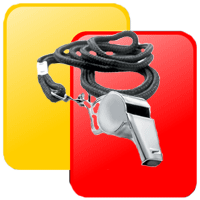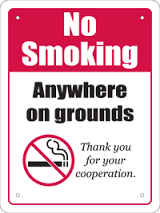 Brief
History of Football Referees
Brief
History of Football Referees
The early
players didn't need a referee! They were gentlemen, and the two
captains could settle any dispute.
Of course, it is not surprising that
occasionally, the two umpires could not agree on a decision, and so
the need arose for a neutral observer, the "referee". The
first mention of the referee occurs in 1880. He was appointed by
mutual agreement of the two clubs. He was required to "keep a
record of the game" and act as timekeeper. He had the power to
caution players who were guilty of ungentlemanly conduct without
consulting the umpires (though any such caution was made with the
umpires present). If a player continued to transgress or was
guilty of violent conduct, the referee could send him off and report
him, even if he offered an apology.
The referee was given greater powers
in 1889/90 when they were allowed to award a free kick for foul play
without waiting for an appeal. It was only at this point that
I suspect he needed a whistle! The well-known story that the
referee's whistle was first used at a Nottingham Forest v. Sheffield
Norfolk game in 1878 seems not to stand up to scrutiny! Forest
didn't play Norfolk in 1878, and the referee did not need a whistle
anyway!
Not
until the 1891/92 season was the referee finally given the powers
they have today and allowed onto the field of play. The two umpires
now assumed the role of linesmen, or "assistant referees", as we
have to call them from 1996 onwards!
Brief History of
Granville District Football Referees
Association

The history of
soccer in Granville began in 1882. The Granville Football
Association was formed in 1902 and celebrated its 100th anniversary
in 2002. The Referees’ Association was formed in 1908 and celebrated
its 100th anniversary of operations and service to Football in 2008.
Football and Referees used to meet in the
mess hall of the railway workshops near the Clyde football field,
which was called Clyde stadium. This was east of Garside Park, where
Mitsubishi now is. The stadium and field were built on railway land.
They had a magnificent grandstand and were fully fenced, a better
ground than Parramatta stadium. This complex was bulldozed in 1939
when the Second World War broke out to enlarge the railway
workshops. Granville Association and the referees then moved to
Lidcombe Oval during the war.
The mayor of Granville, who was the
coach of Granville Magpies, asked the association and referees to
move to Garside Park. This field was called Macarthur Park.
We met in the tin shed changing rooms before the clubhouse was
built. Granville Council existed until sometime in the 1950s.
We then moved to the Club Merrylands Bowling in about 1994.
In the early years, the Granville
Association covered 35% of the metropolitan area, extending from
Gladesville to the Nepean River and Hornsby to Bankstown. The NSWSAF
(now called Football NSW) formed a number of new associations in the
1950s to cater to the growing number of teams in the local areas.
We used to wear a white uniform, but
this was changed to a black uniform in the late 1960s. Our socks
were black with white tops until about 1995 when we switched to
all-black socks.
In the late 1970s, the NSW body, the
AA, brought all associations under one banner and told us not to
wear the Granville badge. We objected because we are Australia's
oldest referee’s association, so we did not join the new body.
Eventually, we were asked to join again, and we were allowed to wear
our Granville badge at our own association matches.
We have always supplied referees for
up to four fields on one day for the Inter-District and Youth League
games. We also supply referees for school competitions and the
Federation.
Thirty years ago, we refereed from
under 7 to all ages. Now, we do from under 9 to Premier League and
50’s. At one time, North Rocks had enough teams to run their own
under-6 competition, just as Pendle Hill and Winston Hills do now.
We had a referee’s team participate in
a knockout competition one year but did not venture into this again.
We also supply referees to do club
gala days. Some of these are recognised Statewide.
The Blacktown Association was formed
in the mid-70s, and we lost a lot of ground. Ashley Brown at Seven
Hills and Lynwood Park, to mention a couple.
The girls’ competition started in the
late 1980s, and we supplied referees to these games.
Holroyd George Cross was our first
ethnic team. Hellas and Colo Colo were other ethnic teams.
Granville does not now allow ethnic names for clubs. We had
teams from places of work; one was Firestone, and another was the
Police.
We did the Seven-Day Adventist
competition for a while.
We had a big wet that cancelled the
Granville competition in 1989. We offered our services to
Southern Districts, Blacktown, and Gladesville. Gladesville
(now North West Sydney Football) was the only association to accept
our offer, and we started doing AA Division 12. Still, it was not
long before we were doing their Premier League. Such was the
quality of Granville Referees. We obtained some good ideas on
an evaluation form and made many friends.
About 30 years ago, one of our
referees was called 10 Yard Sid. Another used to caution known
naughty players before the game started. Another was called the
hatchet man. Another was the one-arm bandit, who always dropped his
coin and lost it during junior games. This gentleman lost his arm in
a work incident but was an excellent referee.
We used to use two referees in the
Banks' competition during the 1970s, a system that FIFA is now
investigating.
The Treasurer used to put the cash for
the match fees in little envelopes and pay the referees at the
meetings.
We needed an incentive for our junior
referees, so the Harry Berle, Bill Mare, and Jack Newhouse trophy
was introduced for the most improved referee. Game control,
attendance at meetings, availability, and personality were all used
to assess the award recipient.
One of our referees was accidentally
hit with a ball in the back of the head after a game and suffered a
serious injury. With our association members' help, he fully
recovered and returned to refereeing—a good lesson in perseverance
and stamina.
Only a few of our referees have been
assaulted on the field, and the Granville Football Association has
dealt with these swiftly. Sadly, this is occurring more often.
One of our junior referees caught a
train to the Blue Mountains one year to fulfil his appointment.
He used to catch multiple buses to his games. This was only a
few years ago.
Lynwood Park had a set of twins, and
we had trouble on the second caution. Fred Batt’s system was
to mark one of the twin’s arms with his pen at the start of the
game; this worked well.
A few years ago, a dinner was held for
all existing life members and their wives. This was a first. They
came from up to 250 kilometres to attend this meeting.
Our association has many
dual-registered members who also referee with Football NSW and their
State League matches. We also used to have several dual-registered
Amateur Association referees.
We have had some outstanding referees
go through our ranks. Simon Micallef’s father, Dennis, used to
referee, and Simon used to run his lines from age 12. He obtained
his local badge, went to the State League and National Leagues, and
is now a retired FIFA referee. He was also on the Olympic panel.
Greg Leverton started with Granville
and became a top national referee, including selection on the
paraplegic Olympic panel. Unfortunately, due to an injury,
Greg had to retire early.
Brian Seymour started with Granville
and was a top national assistant referee.
Heidi Calder was our top lady referee,
doing National and State League ladies' games.
Some of our other achievements are: -
-
Fred Batts NSW ---USA ladies international 1988
-
Granville School Boys Vs Japan High School Boys
-
1982 Granville – Germany Army team, a curtain raiser for an international game.
-
John Kemp did a NSW U16 Vs Korean U16 touring team.
-
Belinda O'Connor, our first lady referee, did the Australia-New Zealand girl's international game at Valentine Sports Park.
Fred Batts is now north of Newcastle
and is the branch coach there. He was our secretary for many
years.
We are currently represented by many
members on the Women's Premier League and Premier Youth League
Panels. In recent years, we have also had members honoured with
selection on various National Referees Panels. These are Nicolas
Backo, who has been selected on the National Youth League Panels as
an Assistant Referee, and Kris Griffith-Jones, who was selected on
the A-League panel as a Referee.
We have done many champion-of-champion
games and ladies' state titles, sent referees to the representative
games and participated in the state titles each year with referees
and assessors.
Granville has supplied many assessors
to the State League and National matches; three of the top people
are Geoff Leverton, Alan Townsend, and Paul Micallef. George
Alexander, Alan Townsend, and Geoff Leverton are now retired. Joe
Rovella and Richard Baker are current NSW State League Football
Referee Assessors.
The Cottom Cup is the oldest trophy
for knockout competition in Australia, and the Challenge Shield is
the oldest soccer trophy in Australia.
We have run referee courses in bowling
clubs, RSL clubs, football clubs, and backyard garages. Our buddy
system is a great innovation to help new referees. We also have
Ordinary Members on the Management Committee who represent members
with no questions asked. This is an avenue for members to ask
questions that may embarrass them or where they wish to be
anonymous.
Training courses and fitness tests are
approximately 20 years old now. Before that, we used to train
with clubs where possible. The new system is a better way of
getting fit and preparing for the season.
Referees must attend a seminar before
the season starts to become familiar with any new rule changes.
We have consistently supplied referees
to assist at judiciary meetings. We attend the Granville
general and executive meetings. We attend the AA meetings (now
called Football NSW State Referees Technical Committee).
Referees' fees were fixed by
discussion with Granville and us; Football NSW now sets them.
Did you know that FIFA referees are
not paid for World Cup games? They are only paid expenses.
In line with current terminology and
policy, the Granville District Soccer Referees Association (GDSRA)
changed its name to the Granville District Football Referees
Association (GDFRA) at the 2010 AGM.
This history was put together by a retired Branch Coach, Mr. Charles Yendle, with the kind assistance of his friends, Geoff Leverton, John Kemp, and Fred Batts.






